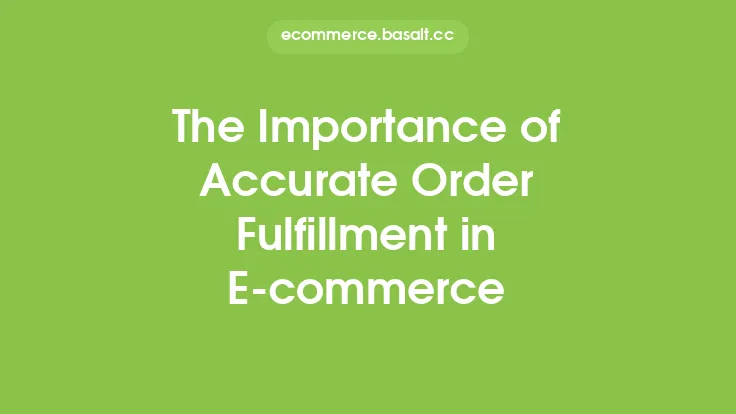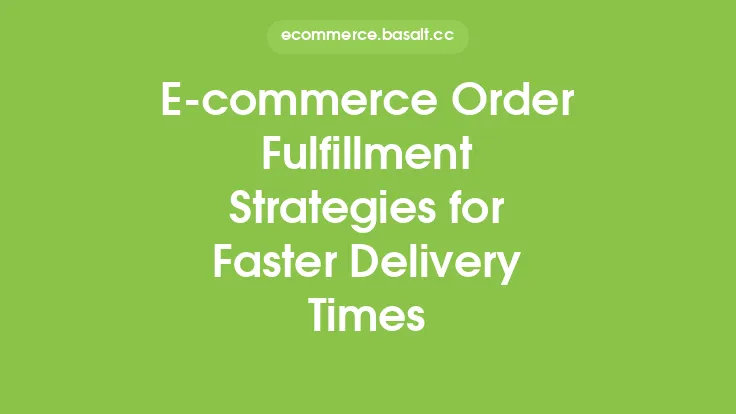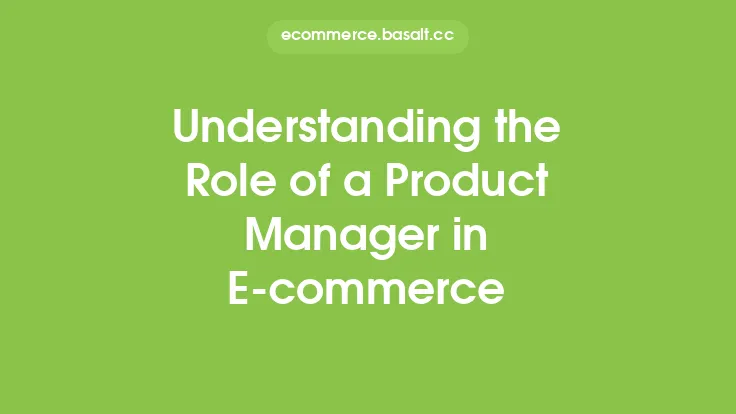The e-commerce industry has experienced tremendous growth over the past decade, with more and more consumers turning to online shopping for its convenience, flexibility, and accessibility. As a result, the order fulfillment process has become a critical component of e-commerce operations, playing a vital role in ensuring customer satisfaction, building brand loyalty, and driving business success. In this article, we will delve into the intricacies of the order fulfillment process, exploring its key components, stages, and best practices.
Introduction to Order Fulfillment
Order fulfillment refers to the process of receiving, processing, and shipping orders to customers. It involves a series of steps, from the moment an order is placed to the moment it is delivered to the customer's doorstep. The order fulfillment process is complex and requires careful planning, coordination, and execution to ensure that orders are fulfilled accurately, efficiently, and cost-effectively. A well-designed order fulfillment process can help e-commerce businesses to improve customer satisfaction, reduce costs, and increase competitiveness in the market.
Key Components of Order Fulfillment
The order fulfillment process consists of several key components, including:
- Order receipt and processing: This involves receiving and processing orders from customers, verifying order details, and checking inventory availability.
- Inventory management: This involves managing and tracking inventory levels, ensuring that products are available to fulfill orders, and preventing stockouts and overstocking.
- Picking and packing: This involves selecting and packing products for shipping, ensuring that orders are accurate and complete.
- Shipping and delivery: This involves selecting a shipping carrier, determining shipping rates and delivery times, and ensuring that orders are delivered to customers on time.
- Returns and refunds: This involves handling returns and refunds, processing exchanges and replacements, and providing customer support.
Stages of Order Fulfillment
The order fulfillment process can be broken down into several stages, including:
- Order receipt: This is the initial stage of the order fulfillment process, where orders are received and processed.
- Order verification: This stage involves verifying order details, checking inventory availability, and ensuring that orders are accurate and complete.
- Inventory allocation: This stage involves allocating inventory to fulfill orders, ensuring that products are available and reserved for shipping.
- Picking and packing: This stage involves selecting and packing products for shipping, ensuring that orders are accurate and complete.
- Shipping: This stage involves selecting a shipping carrier, determining shipping rates and delivery times, and ensuring that orders are delivered to customers on time.
- Delivery: This is the final stage of the order fulfillment process, where orders are delivered to customers.
Best Practices for Order Fulfillment
To ensure a seamless and efficient order fulfillment process, e-commerce businesses should follow best practices, including:
- Implementing a robust inventory management system to track inventory levels and prevent stockouts and overstocking.
- Using automated systems to streamline order processing and reduce errors.
- Providing accurate and timely order tracking and updates to customers.
- Offering flexible shipping options and competitive shipping rates to customers.
- Handling returns and refunds efficiently and effectively, providing excellent customer support and ensuring customer satisfaction.
Common Challenges in Order Fulfillment
Despite its importance, the order fulfillment process can be challenging, with common issues including:
- Inventory management: Managing inventory levels, preventing stockouts and overstocking, and ensuring that products are available to fulfill orders.
- Shipping and delivery: Selecting a shipping carrier, determining shipping rates and delivery times, and ensuring that orders are delivered to customers on time.
- Returns and refunds: Handling returns and refunds, processing exchanges and replacements, and providing customer support.
- Scalability: Scaling the order fulfillment process to meet growing demand, ensuring that orders are fulfilled efficiently and cost-effectively.
Conclusion
In conclusion, the order fulfillment process is a critical component of e-commerce operations, playing a vital role in ensuring customer satisfaction, building brand loyalty, and driving business success. By understanding the key components, stages, and best practices of order fulfillment, e-commerce businesses can improve their operations, reduce costs, and increase competitiveness in the market. Whether you are a small startup or a large enterprise, a well-designed order fulfillment process can help you to achieve your business goals and succeed in the competitive world of e-commerce.





